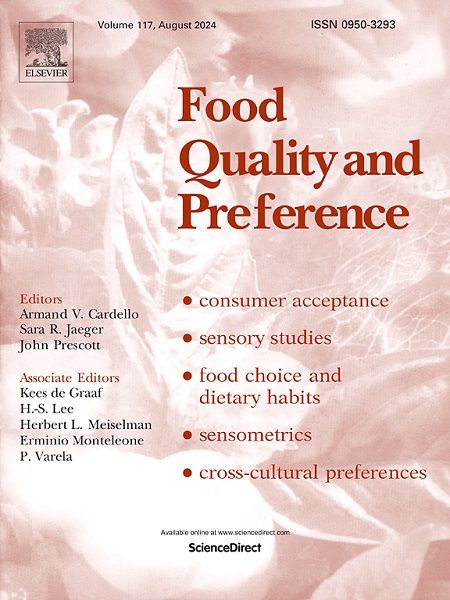你的牛排要几分熟?欧洲消费者对3D打印肉类的态度
IF 4.9
1区 农林科学
Q1 FOOD SCIENCE & TECHNOLOGY
引用次数: 0
摘要
3D打印技术的最新进展为肉制品制造提供了新的机会,有望定制,健康和环保的产品。然而,3D打印肉的成功推出应该伴随着消费者对产品的认知和接受度的详细评估。目前的研究调查了欧洲消费者对3D打印肉类消费的态度,特别是从培养的肉细胞中提取的牛排状组织。这项研究涉及法国、捷克共和国和爱尔兰的571名消费者。问卷分为四类:传统肉类消费习惯、影响肉类消费的因素、3D打印产品知识、尝试3D打印食品和肉类的意愿。通过通径分析探讨各种因素对肉类消费习惯和3D打印肉类兴趣的影响。研究结果表明,尝试3D打印肉(牛排)的意愿明显低于其他3D打印食品,如糖果或意大利面。人们对3D打印肉类的兴趣主要受到味道、经济价值、环境影响、宗教原因和传统肉类消费习惯的影响。因此,3D打印肉类的成功应用很可能取决于它能否实现其降低环境影响的承诺,并辅以精心设计的沟通策略来强调这一点。从生产商的角度来看,关注3D打印牛排的最终味道至关重要,肉的最终价格也是一个重要的考虑因素。本文章由计算机程序翻译,如有差异,请以英文原文为准。
How do you want your steak? Attitudes of European consumers towards 3D printed meat
Recent advances in 3D printing technology have provided a new opportunity for meat product manufacturing, promising customizable, healthy, and environmentally friendly products. However, the successful launch of 3D printed meat should be accompanied by a detailed assessment of consumers' perception and acceptance of the products. The current study examined European consumer attitudes towards the consumption of 3D printed meat, particularly steak-like tissue derived from cultivated meat cells. The research involved 571 consumers across France, the Czech Republic, and Ireland. The questionnaire was divided into four categories: conventional meat consumption habits, factors affecting meat consumption, knowledge about 3D printed products, and willingness to try 3D printed food and meat. Path analysis was used to explore the effects of various factors on meat consumption habits and interest in 3D printed meat. The findings indicated that willingness to try 3D printed meat (steak) was significantly lower than for other 3D printed foods such as confectionery or pasta. Interest in 3D printed meat was primarily influenced by taste, economic value, environmental impact, religious reasons, and conventional meat consumption habits. The successful uptake of 3D printed meat would thus likely rely on it meeting its promise to have lower environmental impact, accompanied by a well-designed communication strategy that highlights this. From the perspective of producers, it will be crucial to focus on the final taste of the 3D printed steak, with the ultimate price of the meat also being a significant consideration.
求助全文
通过发布文献求助,成功后即可免费获取论文全文。
去求助
来源期刊

Food Quality and Preference
工程技术-食品科技
CiteScore
10.40
自引率
15.10%
发文量
263
审稿时长
38 days
期刊介绍:
Food Quality and Preference is a journal devoted to sensory, consumer and behavioural research in food and non-food products. It publishes original research, critical reviews, and short communications in sensory and consumer science, and sensometrics. In addition, the journal publishes special invited issues on important timely topics and from relevant conferences. These are aimed at bridging the gap between research and application, bringing together authors and readers in consumer and market research, sensory science, sensometrics and sensory evaluation, nutrition and food choice, as well as food research, product development and sensory quality assurance. Submissions to Food Quality and Preference are limited to papers that include some form of human measurement; papers that are limited to physical/chemical measures or the routine application of sensory, consumer or econometric analysis will not be considered unless they specifically make a novel scientific contribution in line with the journal''s coverage as outlined below.
 求助内容:
求助内容: 应助结果提醒方式:
应助结果提醒方式:


